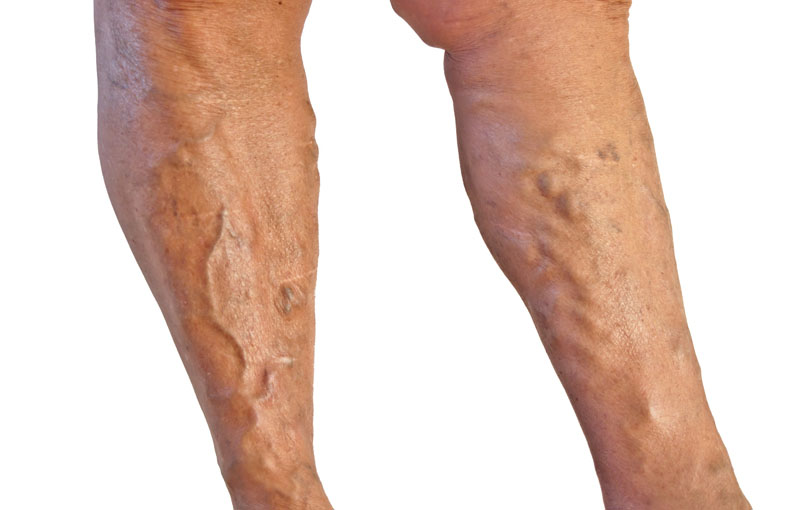Varicose Veins Treatment
- Home
- Varicose Veins Treatment
Varicose veins are veins that have become enlarged and twisted. The term commonly refers to the veins on the leg, although varicose veins can occur elsewhere. Veins have pairs of leaflet valves to prevent blood from flowing backwards (retrograde flow or venous reflux). Leg muscles pump the veins to return blood to the heart, against the effects of gravity.
When veins become varicose, the leaflets of the valves no longer meet properly, and the valves do not work efficiently (valvular incompetence). This allows blood to flow backwards and they enlarge even more.
Besides being a cosmetic problem, varicose veins can be painful, especially when standing. Severe long-standing varicose veins can lead to leg swelling, venous eczema, skin thickening and ulceration.


A. SIGNS AND SYMPTOMS:
- Aching, heavy legs which are often worse at night and after exercise.
- Appearance of spider veins in the affected leg
- Ankle swelling, especially in the evening.
- A brownish-yellow shiny skin discoloration near the affected veins.
- Redness, dryness, and itchiness of areas of skin
- Venous Ulceration, especially when making a sudden move as standing up.
- Minor injuries to the area may bleed more than normal or take a long time to heal.

B.Varicose Veins TREATMENT:
Patients with varicose veins should be investigated using lower limbs venous ultrasonography. The results from a randomised controlled trial on patients with and without routine ultrasound has shown a significant difference in recurrence rate and reoperation rate at 2 and 7 years of follow-up.
Treatment can be either conservative or active. Active treatments can be surgical and non-surgical.
1) Conservative modalities:
- Elevating the legs often provides temporary symptomatic relief.
- Advice about regular exercise
- The wearing of graduated compression stockings has been shown to correct the swelling, nutritional exchange, and improve the microcirculation in legs affected by varicose veins
- Medication.

2) Active treatment modalities:
Active treatments can be surgical and non-surgical. The National Institute for Health and Clinical Excellence (NICE) produced clinical guidelines in July 2013 recommending that all people with symptomatic varicose veins and worse should be referred to a vascular service for treatment.
Surgical treatment modes such as stripping, ambulatory phlebectomy, cryosurgery have now given way to the more conservative non-surgical treatment methods such as endovenous thermal ablation, using either laser, radiofrequency or steam.
varicose veins laser treatment has the unique ability to produce a specific colour (wavelength) of light which can be varied in its intensity and pulse duration. The laser beam can cut, seal or vaporize skin tissue and blood vessels.


The varices are located using ultrasound, and a local anaesthetic is administered to the affected area. Next, the optical fibre is introduced into the vein via a catheter and moved forward to the section to be treated. In addition to the guiding beam, the fibre’s correct position is monitored by an ultrasound device.
The laser radiation is introduced in pulse mode and guided along the vein’s lumen by slowly and continuously retracting the fibre. The transformation of the laser radiation to heat results in the thermal shrinkage and dissolution of tissue structure, which ultimately leads to the closure of the varicose veins by thrombosis and spasm.
The features of laser surgery that make it patient friendly are its minimally invasive nature and reduced recurrence rate of 2-4% as against surgical options which have a recurrence rate of 20-40%. Further, the fact that it can be done under local anaesthesia and as an OPD procedure help in making it more affordable.
Case - 1 :
54yr male patient with complains of dragging pain, swelling and discolouration in the lower aspect of the left leg since one year. At present there is a non healing venous ulcer seen in the medial aspect of the ankle. Also noted multiple dilated tortuous outpouchings (varicosities) in the calf region. Post endovenous laser ablation of the varicose veins, the wound healed in 2 months.


